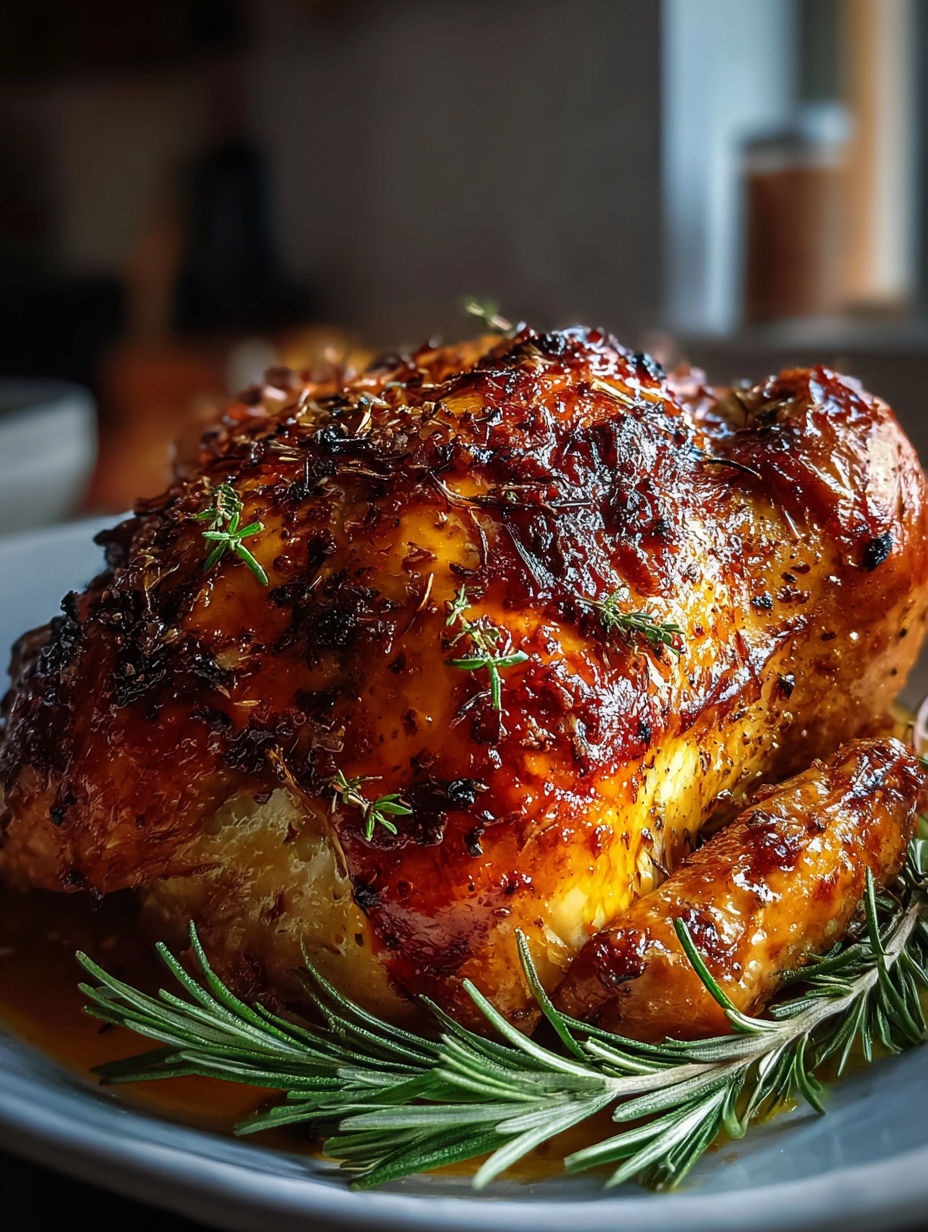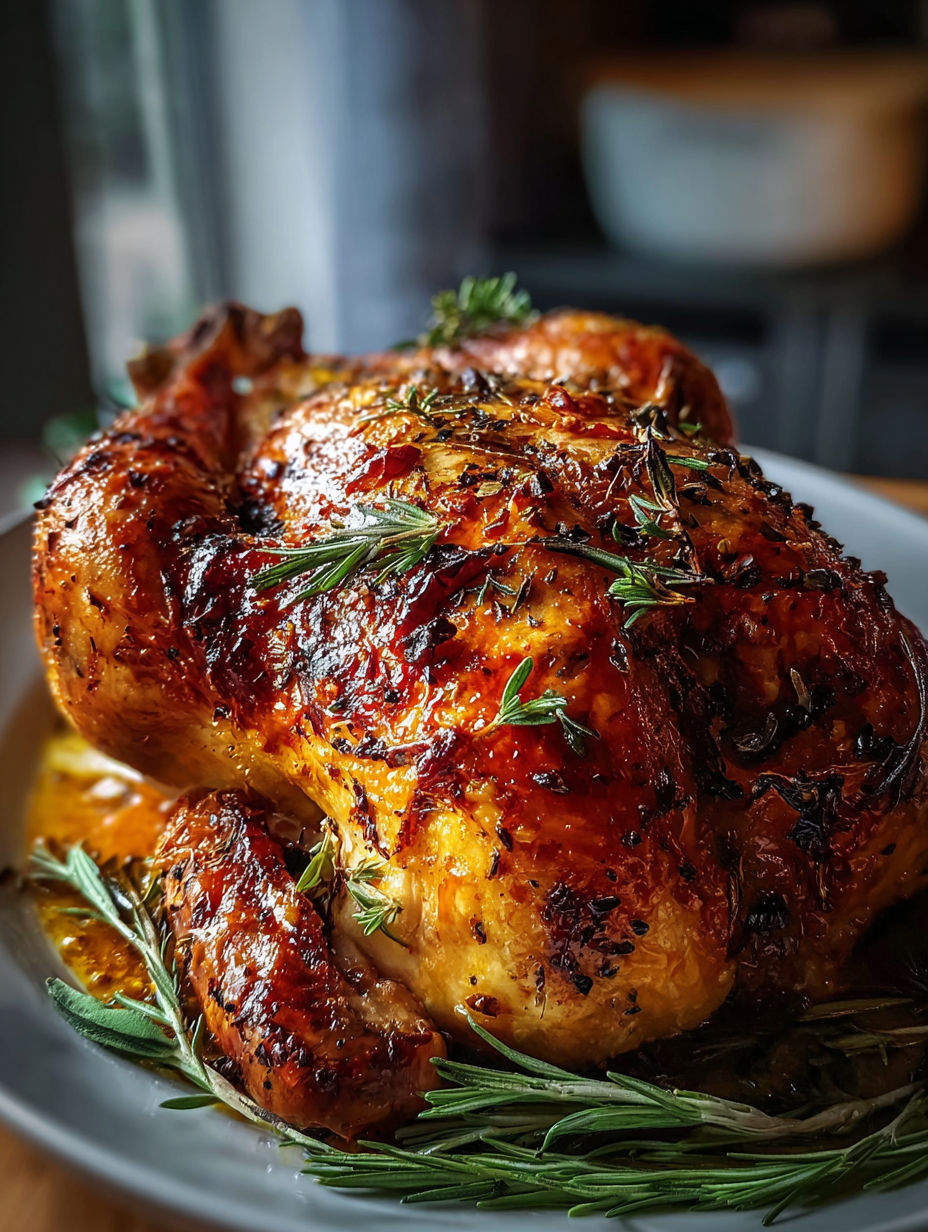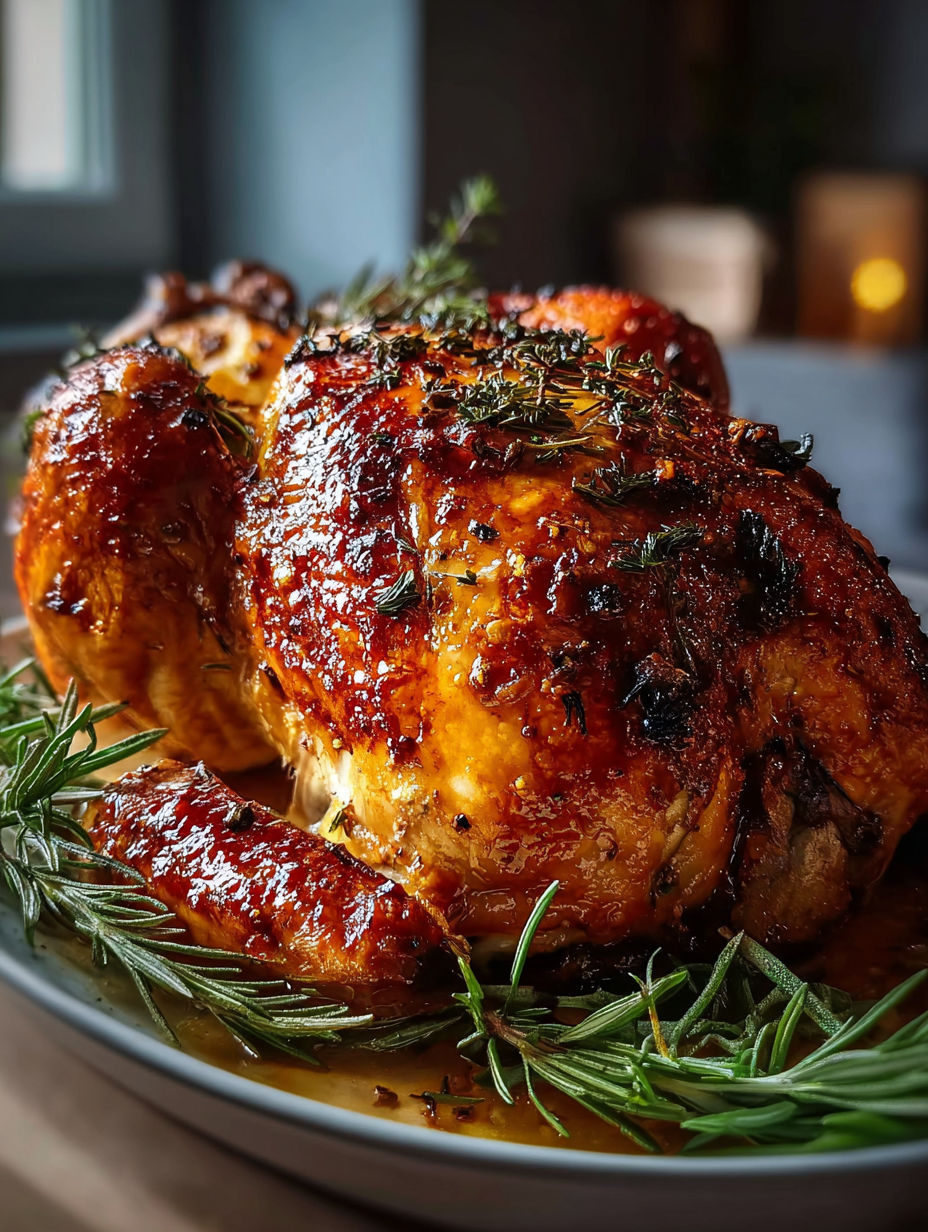 Save
Save
Imagine your house filled with warm, inviting smells thanks to this juicy turkey loaded with herbs and citrus. It’s the kind of roast everyone will love, brightened up with fresh herbs and zesty fruit that make it both familiar and exciting.
I stumbled on this one when I wanted something special for the holidays. Now, it’s my favorite for any big get-together.
What You’ll Need
- Fresh turkey: between 12 and 14 pounds for a solid meal and even cooking
- Butter without salt: spreads smoothly to keep everything moist and tasty
- Salt plus black pepper: these bring out the turkey’s natural goodness
- Garlic and onion powders: add an extra comfy, savory kick
- Chicken broth: keeps things juicy while roasting and boosts gravy flavor
- Lemon and onion, cut into quarters: stuffed inside to fill the bird with bright aromas
- Fresh herbs like sage, rosemary, and thyme: pick firm, lively sprigs to give the bird a nice fragrant touch
Step-by-Step Instructions
- Get Ready:
- Set your oven to 325 degrees Fahrenheit for a slow, steady roast. Take out the giblets and rinse the turkey inside and out, then dry it well with paper towels. This helps the skin get nice and crisp.
- Add Flavor:
- Spread softened butter all over the turkey skin to lock in moisture and flavor. Sprinkle salt, pepper, garlic powder, and onion powder evenly on top. These spices create a tasty crust during cooking.
- Stuff It:
- Put the quartered lemon, onion, and fresh herbs inside the turkey’s cavity. This trick helps the meat soak in fresh, tangy, and herbal scents.
- Roast Slowly:
- Set the turkey breast side up in a roasting pan and pour chicken broth into the bottom. Cover with foil to keep it moist and roast for 2.5 to 3 hours depending on size. Cooking gently keeps it juicy.
- Get Crispy Skin:
- Take off the foil about one hour before it’s done to let the skin brown and crisp up beautifully. This little step gives the bird great texture.
- Check and Rest:
- Use a meat thermometer to make sure the thickest breast part hits 165 degrees Fahrenheit. After cooking, let the turkey rest for 20 to 30 minutes so the juices settle and slices stay moist.

I’m a fan of fresh rosemary since it adds piney flavors that remind me of chilly winter walks. Once, I accidentally used twice the amount of lemon and the extra zing made it unforgettable.
How to Store Leftovers
Keep any leftover turkey in airtight containers to lock in moisture. Make sure the meat cools fully before popping it in the fridge so it doesn’t get soggy. If you want to freeze it, wrap it tight and store for up to three months.
Switch It Up
Try swapping lemon with lime or orange for sweeter or tangier notes. You can add crushed garlic or smoked paprika to shake up the spice mix. Fresh sage paired with tarragon brings a slightly peppery, fresh herb vibe.
Great Things to Serve With It
Serve alongside creamy mashed potatoes and pan gravy made from the drippings. Roasted root veggies go great with the citrus and herbs. A crisp white wine like Sauvignon Blanc complements the flavors well.

This golden roast turkey brings everyone closer, filling the table with thanks and celebration with every juicy, herb-scented bite.
Frequently Asked Cooking Questions
- → What do fresh herbs do to the turkey’s taste?
Herbs like sage, rosemary, and thyme add deep, earthy notes that make the flavor more interesting and tasty.
- → Why put butter under the turkey skin?
Butter helps keep the meat juicy and makes the skin brown nicely and get crispy while roasting.
- → What’s the reason for lemon and onion inside the bird?
They steam inside while cooking, which keeps the turkey moist and adds a fresh, tangy scent to the roast.
- → How do I know when the turkey is done?
Check with a meat thermometer. When the thickest part hits 165°F (75°C), it’s safe and perfectly cooked.
- → Why should the turkey rest before you carve it?
Resting lets the juices spread out inside, so the meat doesn’t dry out and stays soft and juicy with every slice.
